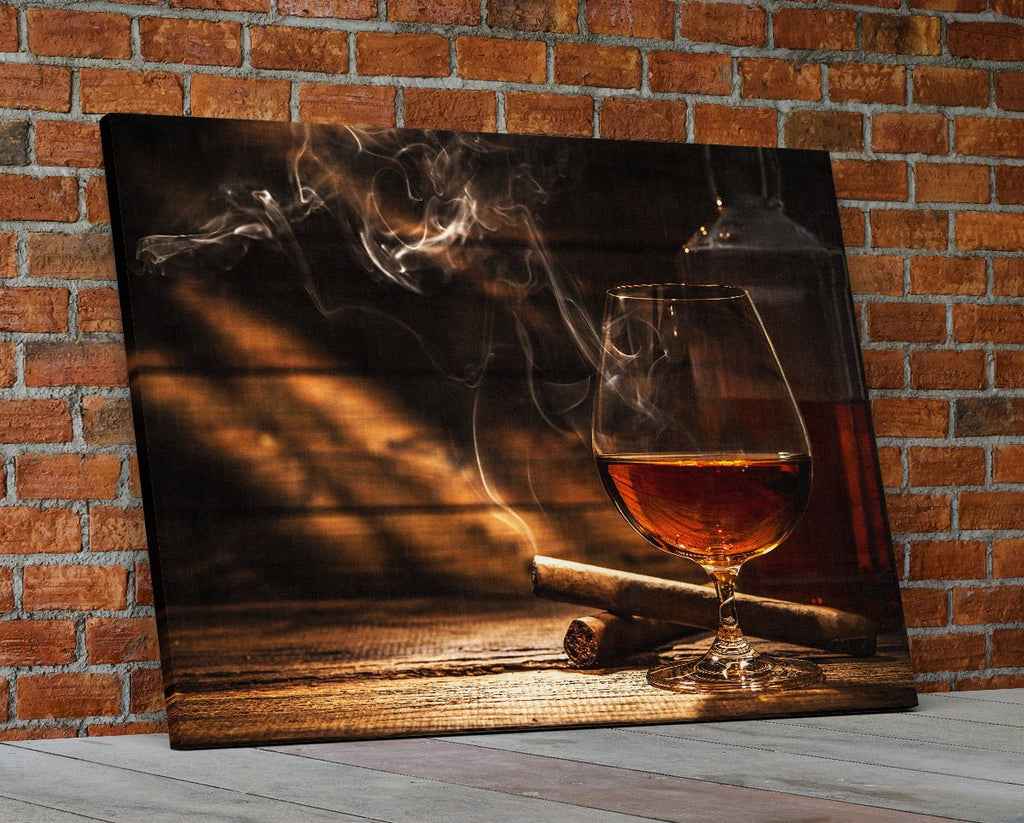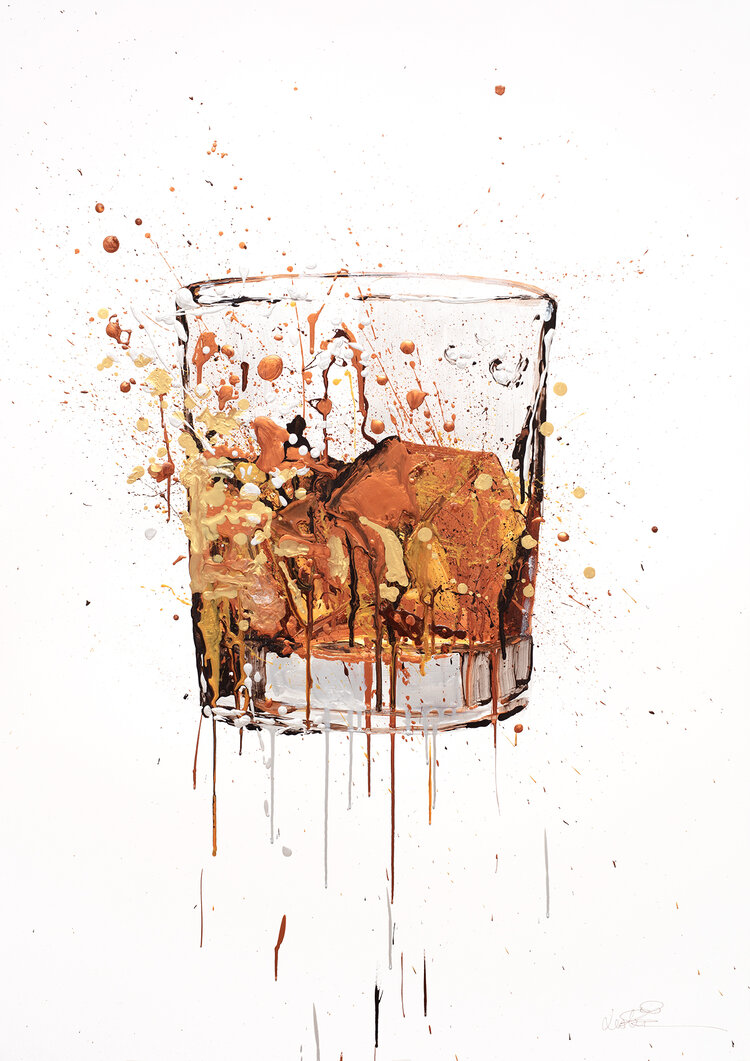Whiskey Art as a Declaration: Just How It Enhances Home Décor
The Importance of Whiskey Art in Celebrating Heritage and Craftsmanship in the Beverage Sector
The intricate relationship between whiskey art and the event of heritage and craftsmanship within the beverage industry can not be overemphasized. With attentively developed bottles and labels, bourbon brand names encapsulate their historical origins and the artisanal skills that specify their production approaches. This creative dimension not just boosts market allure however also functions as a channel for social storytelling, cultivating a deeper link between the customer and the craft. As we explore the various facets of this subject, intriguing concerns about the influence of modern-day trends on traditional methods occur, triggering additional exam.
The Historical Roots of Whiskey
At the heart of bourbon's allure exists an abundant tapestry of historical origins that trace back to old civilizations. The origins of whiskey can be connected to the distillation practices of the Sumerians and Babylonians around 2000 BCE, where early types of fermented grain drinks started to emerge. Nonetheless, it remained in the Middle Ages that the art of purification developed substantially, specifically in Ireland and Scotland, leading to the production of scotch as we recognize it today.
The term "scotch" itself originates from the Gaelic word "uisce beatha," suggesting "water of life." This expression highlights the cultural value of bourbon in Celtic societies, where it was commonly connected with rituals, parties, and communal bonding. By the 15th century, purification came to be a recognized craft within reclusive communities, paving the means for the establishment of lawful distilleries.
As profession paths expanded, bourbon's popularity grew, transcending local borders and recording the rate of interest of lovers worldwide. Realism Art. This historic journey shows not just the craftsmanship behind bourbon production but likewise its essential function in social and cultural contexts, marking it as a considerable beverage throughout background
Artistic Expression in Branding
Whiskey branding stands as an engaging junction of artistry and commerce, where visual identification plays a critical function in shaping consumer understanding. The visual appeals of whiskey tags, product packaging, and advertising and marketing materials mirror not just the brand's tale yet also its core values and heritage. Through artistic expression, distilleries share a story that reverberates with consumers, evoking emotions and triggering links.
The use of shade, typography, and images in branding serves to separate products in a saturated market. Typical motifs might evoke a sense of credibility and workmanship, while modern styles can represent technology and forward-thinking. This tactical imaginative direction boosts brand name recognition and loyalty, enabling consumers to create an individual relationship with the whiskey they select.
Furthermore, creative expression in branding usually acts as an event of local heritage. Distilleries frequently include local icons or historic referrals right into their styles, producing a sense of location that welcomes consumers to take part in a more comprehensive cultural experience. Inevitably, the creativity behind scotch branding not just boosts visual allure but also enriches the total story of the brand name, cultivating a deeper recognition for the workmanship and heritage embedded in each container.
Workmanship in Container Layout
The artistry evident in scotch branding prolongs beyond aesthetic identification to encompass the workmanship associated with bottle design. Each container acts as a vessel not Learn More Here just for the spirit within, yet likewise for the story it outlines its high quality, origin, and practice. The layout procedure requires thorough attention to detail, as elements such as closure, form, and product add substantially to the total perception of the scotch.
Craftsmanship in bottle style involves picking high-quality glass that can enhance the bourbon's color and clearness, while additionally supplying a tactile experience for the consumer. The shape of the bottle should be both cosmetically appealing and functional, typically showing the heritage of the brand name. Several distilleries go with one-of-a-kind shapes or printed logos that stimulate a sense of credibility and background.
Furthermore, the tag layout and typography play a critical role in connecting the brand's story. Bourbon Art. A well-crafted container not just captivates the consumer's eye however additionally reinforces the brand's commitment to quality and custom. In this method, the craftsmanship of bottle design ends up being a vital element of the scotch experience, combining creativity with a profound regard for heritage
Social Value of Scotch Art
Celebrating tradition and craftsmanship, the social significance of bourbon art transcends plain aesthetic appeals, intertwining with the historical and social stories of the areas from which it originates. Each container works as a canvas, portraying the distinct tales, mythology, and customs that have shaped regional whiskey-making practices. The intricate designs commonly show the heritage of the distillers, incorporating icons and themes that reverberate with the culture and worths of their neighborhoods.

On top of that, scotch art plays a crucial role in public gatherings and celebrations, serving as a concrete web link in between people and their shared experiences. By appreciating the artistry in bourbon product packaging, customers grow a deeper understanding and respect for the craft, ultimately improving their enjoyment of the drink itself.
Modern Trends in Scotch Discussion
Recently, the investigate this site presentation of bourbon has actually evolved to mirror contemporary preferences and trends while still recognizing typical craftsmanship - Limited Edition. Distilleries are increasingly concentrating on aesthetic elements that improve the overall drinking experience, bridging the space in between heritage and modernity
Innovative bottle layouts have emerged, typically integrating lasting materials and creative tags that inform compelling stories. Several brands currently work together with local musicians, infusing their products with one-of-a-kind aesthetic expressions that reverberate with consumers. In addition, limited-edition releases are typically packaged in collectible containers, including worth and charm for connoisseurs.

Conclusion
In conclusion, bourbon art serves as an important channel for sharing the heritage and workmanship inherent in the beverage industry. Through elaborate branding, cutting-edge container layouts, and culturally substantial creative elements, bourbon brand names properly recognize their practices and attach with customers.


Craftsmanship in bottle design entails selecting premium glass that can enhance the whiskey's shade and clarity, while additionally giving Clicking Here a tactile experience for the consumer. In this way, the workmanship of bottle style ends up being a vital element of the whiskey experience, combining artistry with an extensive regard for heritage.
In conclusion, scotch art offers as a vital avenue for revealing the heritage and workmanship inherent in the beverage industry.